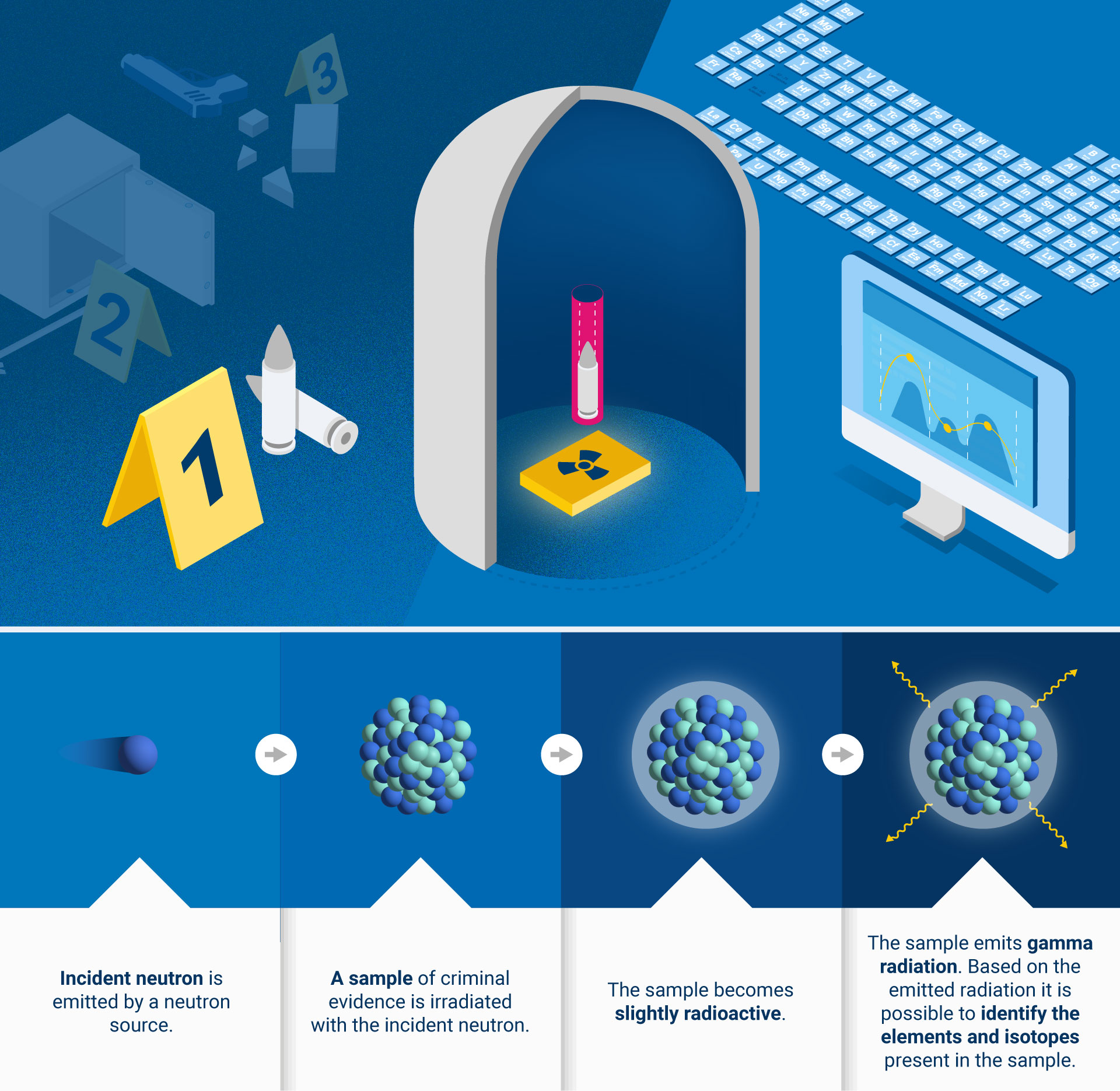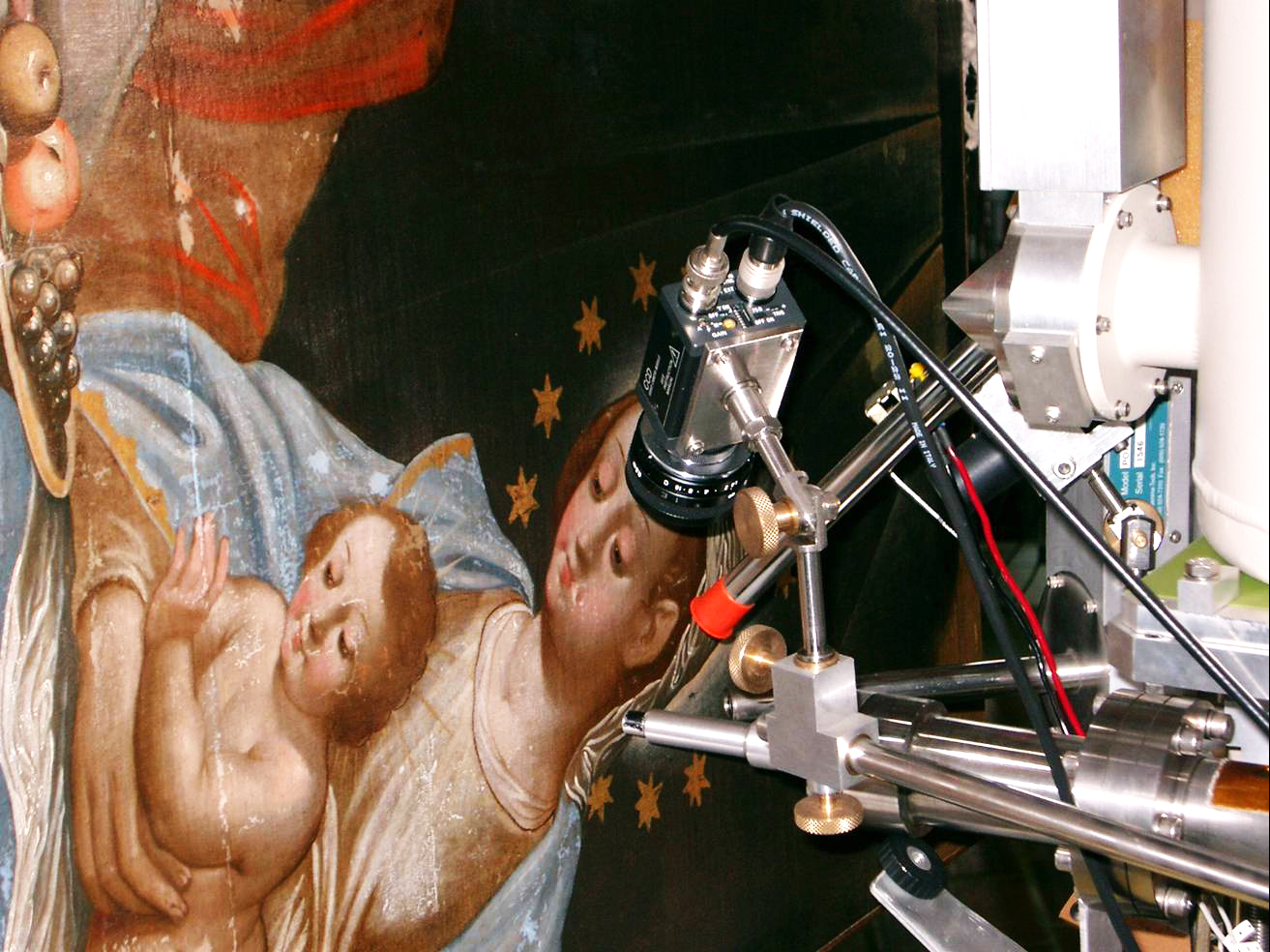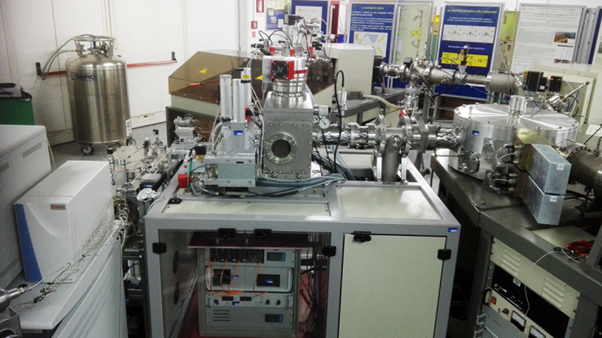Nuclear techniques can be used to analyse samples of forensic evidence related to crimes - from drug trafficking to murders or art forgeries. X-ray techniques, neutron activation analysis, ion beam analysis and radiocarbon dating are among the most common methods, which can complement more traditional methods in forensic investigations. Through the analysis of the chemical and physical properties of materials, supported with other forensic evidence, such as DNA or fingerprints, these techniques can help link samples of evidence taken at crime scenes to perpetrators.
How Do Nuclear Techniques Help in Investigations?
Nuclear techniques can help specialists analyse microscopic traces of incriminating evidence samples, such as elements in paint or a single hair. This can help to uncover information which could not be discovered otherwise, for example, the true age of forged art pieces or whether an individual was poisoned. Moreover, nuclear techniques are considerably less destructive compared to other methods, such as the use of chemicals for analysis, which can alter the original condition of fragile evidence, for example a tiny shard of glass. Therefore, after being analysed with nuclear techniques, fragile evidence can still be preserved for further analysis.
X-ray Techniques in Forensics

X-rays have helped to uncover crimes throughout history. For example, an X-ray of the teeth of Ted Bundy - a serial killer in the United States - helped law enforcement to convict him. (Photo: Florida State Photographic Collection).
The use of X-ray radiation is one of the most widely used analytical tools in forensics. X-ray emission techniques are sensitive and reliable - they can be applied to very small samples, and in most cases do not destroy the evidence. X-ray techniques tend to produce results in minutes, and multiple analyses can be carried out quickly. In addition, portable X-ray equipment can be easily transported, which enables this technology to be used in on-site investigations.
X-ray techniques can help to detect the presence of, and measure the concentration of, elements in virtually all types of material. They can help analyse the material composition of soil, drugs or minerals and determine their source. X-rays also help in comparative examinations of paint, metals or gunshot residues, and in medical examinations.
Scientists use devices such as X-ray fluorescence spectrometers or synchrotrons to bombard a sample of the test material with X-ray beams. The beams interact with the atoms of the sample, releasing radiation, which can be detected and used to identify the element from which the atoms originated.
Neutron Activation Analysis (NAA) in Forensics

Caption: NAA has been used by investigators for decades, helping to determine the precise quantity of a chemical element, or specific isotopes of an element, in a sample of criminal evidence - such as a bullet. This technique was used in forensic investigations of the assassination of US President John F. Kennedy. (Infographics: A. Vargas/IAEA).
Neutron activation analysis is a technique which uses the interaction between a flux of neutrons and the material being studied to determine the "elemental fingerprint" of a sample - in other words the exact isotopic composition that provides information about its age and origin.
During NAA, when samples are bombarded with neutrons, their atoms release particles and/or radiation, which can be picked up and analysed by a specialized detector. This can help to determine what the sample is it made of, how old it is and where it came from. NAA is usually used to analyse the material composition of bullets in order to trace their origin, using very small samples. In addition, analysis using this technique can reveal the elemental composition of hair, which may help to uncover new details about a case - for example, the presence of drugs or other toxic substances in the body.
NAA can also be used to establish the origin of premium foods and identify counterfeit products, for example truffles, by irradiating them with neutrons and detecting the gamma radiation emitted by the atomic nuclei of the chemical elements in a small sample of the truffle. When this radiation is detected, it can help to match the elements in the sample to a particular location. It can also be used to determine the authenticity of other premium food products.
Ion Beam Analysis (IBA) in Forensics

Non-destructive ion beam analysis of art objects has been used at the Jožef Stefan Institute in Slovenia. Read this article to learn more about the use of nuclear techniques for studying and preserving objects of cultural heritage and art (Photo: JSI/Ziga Smit)
Ion beam analysis (IBA) is another nuclear method gaining ground in criminal investigations. For this kind of analysis, ion beam accelerators are used to speed up ions or electrons, producing a beam of charged particles. When samples of forensic evidence are placed into the ion beam, they emit radiation which can be picked up and analysed. Using ions enables investigators to understand the composition and origin of the sample, which can help to analyse drugs, explosive and gunshot residues, fake historical artifacts or art. Determining the age and composition of samples means they can be more effectively used as evidence in investigations.
Gunshot residues, for example, can help to investigate violent crimes involving firearms. A gunshot residue is a cloud of vapours and particles released from the explosion of a cartridge in a firearm. Nuclear techniques, such as ion beam analysis, help to detect the inorganic components originating from the shot to detect tiny particles on items related to a shooting (e.g. on the suspect's hands or clothes) in order to confirm the identity of the shooter.
IBA enables investigators to conduct elemental mapping, which helps in the analysis of specific parts of the evidence and detects tiny traces of incriminating substances, such as microscopic particles of residues on particularly small parts of clothing.
Ion beams have also been used to analyse glass shards from hit and run accidents, which could prove useful in investigations of crimes involving vehicles. Studies show that through a combination of IBA and machine learning, glass fragments from car windows can be traced back to various car models and manufacturers with up to 80 per cent accuracy.
Radiocarbon Dating in Forensics

This accelerator mass spectrometer, installed at the University of Salento's Centre for Dating and Diagnostics (CEDAD), is used for radiocarbon dating of samples. (Photo: University of Salento)
Radiocarbon dating is a method which uses an isotope of carbon - carbon-14 - to determine the true age of ancient objects, made of organic materials, and detect forgeries of art pieces. This technique can determine the age of objects up to 50 000 years old and has already helped a number of investigations to determine the authenticity of paintings, statues and other valuable historical objects.
For example, in 2019 experts used radiocarbon dating to identify forgeries of two well-known paintings - one Impressionist and one Pointillist. Analysis of the canvas fibres revealed that they were manufactured after the death of the purported artists, which helped to determine that the paintings were fake.
Other methods
Other common nuclear techniques can also be used in investigations, for example the use of stable isotope analysis for food fraud detection.
Stable isotope analysis is a technique used to determine the origin and authenticity of different foods, enabling specialists to detect and prosecute individuals involved in food adulteration (e.g. selling low-quality food under premium labels for high prices). Stable isotopes can be measured with specialized equipment, which can detect the tiniest differences in the ratios of a chemical element's light and heavy forms. Such analysis can provide evidence about a particular type of food in order to make sure it is coming from the right region and uses authentic ingredients described on the label (e.g. detecting sugar syrups added to honey).
What is the Role of the IAEA?
- The IAEA contributes to the development and application of novel nuclear techniques for analytical purposes. The Agency develops and delivers innovative nuclear analytical tools and related frameworks to support the needs of different countries.
- Using its worldwide network of national nuclear laboratories, the IAEA provides concrete tools to forensic experts and investigators through its Technical Cooperation Programme and Coordinated Research Projects.
- The IAEA provides e-learning courses, focusing on the application of nuclear techniques in the field of Cultural Heritage and Forensic Sciences.
- Through its Coordinated Research Projects (CRP) the IAEA studies how nuclear analytical techniques can be used to obtain information on food origin and authenticity, to assess art authenticity and to analyse evidence in crime scenes.
- The IAEA also supports countries by providing technical assistance on forensics capacity building in the form of trainings, residential assignments, scientific advisories and consultations.
- The IAEA is working to bridge the gap between scientists, law enforcement and the forensic community to improve prevention and countering of criminal activities around the world using nuclear science and technology.
- The IAEA produces published materials to spread awareness about the use of different nuclear techniques and benefits they bring for investigations and detection of fraud.
- The IAEA is working with other UN organizations like UNODC, UNICRI, UNIDO, FAO, and other international partners to foster nuclear analytical techniques for forensic applications.






